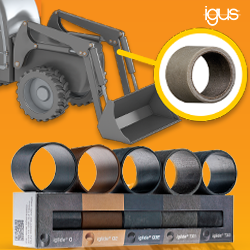How Are Robots Tested for Harsh Conditions?
Advanced robots can spare human workers from dangerous or life-threatening conditions and environments - like the intricate underwater terrain of a search-and-rescue mission or extreme pressures faced by oil and gas workers. Robots aren't invincible, however, and they need to be carefully designed to handle these extreme conditions. Here are some of the extreme environments that robots face - and how designers test them
University of Texas "opens Doors" to Safer Nuclear Waste Retrieval
The Nuclear and Applied Robotics Group, based in the University of Texas at Austin, has a mission to "develop and deploy advanced robotics in hazardous environments to minimize risk for the human operator."
How Robots Are Changing Nuclear Disaster Protocols
Despite modern advancements, a great deal of robots, such as the one deployed to Fukushima in March 2017, have died as a result of the high radiation levels.
Records 1 to 3 of 3
Featured Product

igus - triflex R robot dresspacks
Properly managed cables on a multi-axis robot are the difference between successful, failure-free operation and frequent unplanned downtime and lost profits. Discover how triflex® robot dresspacks are designed to protect cables in multi-axis motion - extending cable life, minimizing costs, and reducing unplanned downtime.
Robotics and Automation - Featured Company

MMP Inc. / MIDWEST MOTION PRODUCTS, INC.
The Leader in Rapid Prototyping of High-Quality Motion Control Solutions. MMP is actively engaged in the design, manufacturing and distribution of standard and custom motion control equipment, including fully reversible brushed and brushless DC gearmotors, motors with failsafe brakes and servomotors with feedback devices such as analog tachometers and encoders. We also provide fully-sealed IP-65 motor speed controls @ 12/24/48 VDC, AC~DC power supplies and a wide variety of 12/24 VDC linear actuators. If you need a sample right away, we can be a project saving convenience for you. We provide more than 8000+ released DC Gearmotor designs with cost-effective solutions for robotics and automation companies. These designs are unique and custom-built to suit the specific application requirements of the motion control projects.



